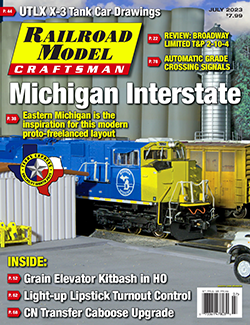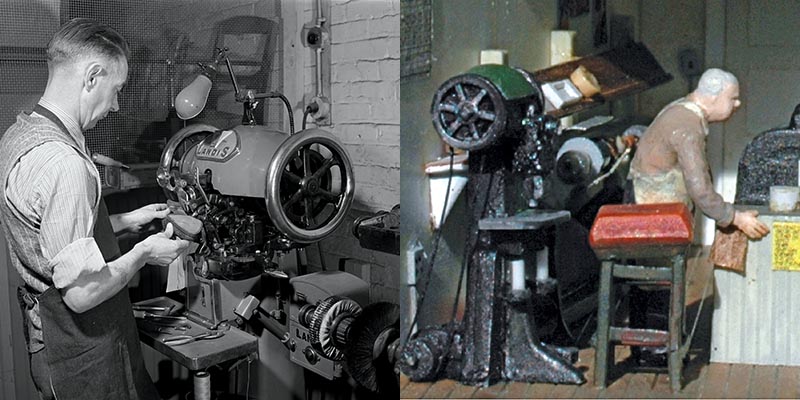 Have you noticed many paint names suggest something other than the color you actually see? I once owned a car the manufacturer fancifully listed as “Panama Brown.” Everyone else, including the Department of Motor Vehicles, identified it as “orange.” Confusion ensued registering it. Sometimes, in the quest for prototypical accuracy, we get bogged down by what something is called rather than what it can be.
Have you noticed many paint names suggest something other than the color you actually see? I once owned a car the manufacturer fancifully listed as “Panama Brown.” Everyone else, including the Department of Motor Vehicles, identified it as “orange.” Confusion ensued registering it. Sometimes, in the quest for prototypical accuracy, we get bogged down by what something is called rather than what it can be.
With paint, the snag usually is seeking to exactly match a particular railroad’s named colors at a particular point in time. Others may point out that color perception is highly subjective. Prototype colors varied depending on what shop mixed and applied the paint, and the length of time and local climate conditions when and where the equipment operated. Yet rather than working on observational skills and judgment, indisputable evidence is sought to confirm that the color, is positively, completely correct in all aspects. I make the case that this pedantic approach can inhibit rather than enhance our results.
This is not a rant, however, about color matching or “rivet counting.” Rather, it’s a few thoughts about expanding our perceptions and how we see things. As a member of the New England, Berkshire & Western club at Rensselaer Polytechnic Institute, I modeled as accurately as I could to follow the high goals of the club. On my own freelanced Connecticut & Vermont Railroad, however, reaching the goals sometimes takes a different path.
Art Curren was well-known for his many articles and books about structure kitbashing. He had a remarkable ability to see well beyond the parts descriptions in the instructions. His numerous demonstrations that individual parts could be, instead, raw materials to use in novel ways inspired me. Revising my perception of what bits and pieces can be has helped me become better not only in how I model but also in what I use to model. So, what about five things that could be made from a simple ladder?
One idea is to use ladder parts as matching ends for industrial shelving. Just add shelves across their rungs and some bracing. Similarly, covering the outside faces of two ladders handily turns them into the sides of bookcases where the rungs support the shelves. Too obvious? Okay, how about a row of small windows? A ladder can become a wall-mounted handrail along stairs. Just cut off one side rail and some of the rungs. Appropriately enough, pieces of a ladder can frame passable ladder-back chairs; cut, assemble and add seats. Reaching a bit, how about cutting off one side rail and every other rung? Paint the side rail black and the remaining rungs white. Mount the side rail on the ground with the rungs sticking up and you’ve got a credible set of weave poles for agility dog training. Too far out? What were some of the ideas you came up with?
Once you start looking at stuff this way, details that you might never consider adding become real possibilities. Currently, my best example is the heavy-duty sewing machine in the cobbler shop in one of the storefronts on my layout. For my sewing machine, the housing on top started as a featureless “barrel” from a low-end kit. A brake wheel got mounted on each end. The cast iron base began as a wooden post holding up a depot platform roof. Black paint, inverting it and adding a few odds and ends camouflaged it nicely. The best part is the visible sewing mechanism in front of the housing. Recognize it? It’s a slightly modified control valve from a boxcar kit. The sewing machine detail, otherwise unavailable, adds a lot to the cobbler shop window, yet not one piece of it got used in the way it had been originally intended.
Learning to see new possibilities for pre-made details has saved a lot of frustrating efforts trying to precisely fabricate things. Take any detail part, turn it sideways, cut it in half, glue two of them together… What else can you create by looking at common items from a new perspective? If nothing else, the thought exercise is a great way to keep the creative juices flowing. —Bill Gill



